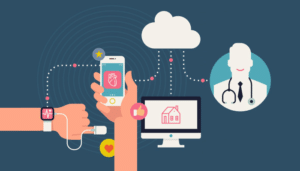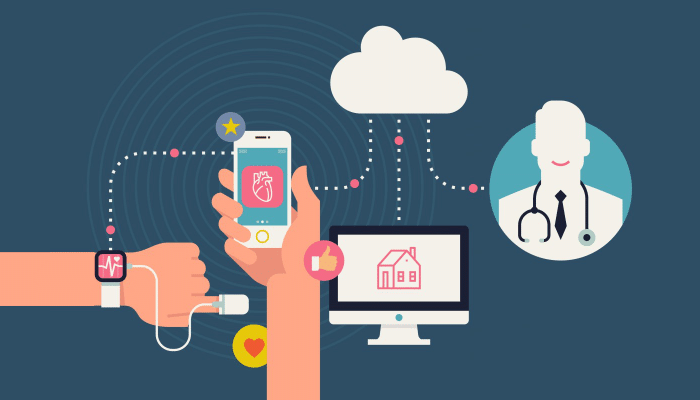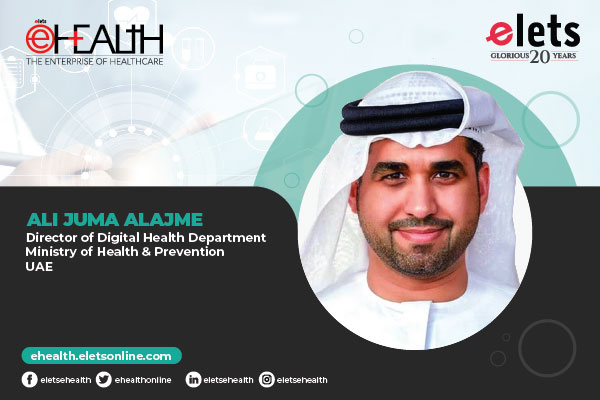Regulating the digital healthcare paradigm
The past few years has witnessed the transformative power of digital technology disrupting the healthcare sector. Technology has emerged as a life saver in strengthening preventive healthcare and addressing the factors of accessibility, affordability and availability “ in the recent past, OpenMRS based Electronic Health Record System has helped managed Ebola in Sierra Leonne. While Google has recently launched revolutionary Deep Learning AI project for cancer screening, telemedicine has proven highly successful in addressing the crushing disease burden of diabetic retinopathy in India. Digital technology adoption has played a pivotal role in optimising of patient care and healthcare systems.
 It is hardly surprising then, that benefits of connected care, the new avatar of healthcare that is most palpable in developing and underdeveloped nations, has evinced high investor interest in healthcare startups. Connected care has also promoted generous R&D allocation by players in the Medtech segment, who are competing intensely to grab a bigger market share while simultaneously exploring avenues for partnerships and consolidation to gain a sharper edge in innovation.
It is hardly surprising then, that benefits of connected care, the new avatar of healthcare that is most palpable in developing and underdeveloped nations, has evinced high investor interest in healthcare startups. Connected care has also promoted generous R&D allocation by players in the Medtech segment, who are competing intensely to grab a bigger market share while simultaneously exploring avenues for partnerships and consolidation to gain a sharper edge in innovation.

According to the 2018 Life Sciences Global Outlook Report by Deloitte, healthcare is growing at a CAGR of 5.1%, global Medtech sales are estimated to be worth $425.1 billion (USD) in 2018 and are forecast to reach $521.9 billion by 2022.

While technology is central to the buoyant growth prospects in healthcare, some of the most complex regulatory mechanisms govern this highly regulated sector, where companies incur significant cost for ensuring compliance. Therefore, there is a critical need for the industry and regulators to work together to strike a fine balance betweenharnessing technology and protecting patient safety while promoting the boundless innovative potential of the industry.
Regulation as a key factor in promoting digital healthcare

With the inevitability of technology advancement, regulators are now more challenged than ever to formulate and enforce norms that keep pace with industry innovations. As regulators hold the key to market access, embracing their guidance at the core of all innovations will prove beneficial to the industry and the public at large. Unlike the traditional medical devices industry, the digital framework requires the consideration of the broader ecosystem in the healthcare continuum (Medtech companies, Regulatory, Payers, Providers, Patients, etc).

The US Food and Drug Administration (FDA) in recent years has been proactive in issuing guidance to new age digital innovations. The agency has acknowledged the significance of the digital impact when it reiterated its commitment to advancing digital health policies to encourage innovation, bringing efficiency and modernisation to regulation.
A major step in this direction is the establishment of the Digital Health Pre-Cert Pilot program by FDA, with the aim of supporting development of a regulatory model to assess the safety and effectiveness of software technologies without inhibiting patient access to these technologies.
The program is a big step in aiding Software as A Medical Device (SaMD) regulations, the goal being to provide for a least burdensome regulatory oversight to assess organizations. The new SaMD risk categorisation Framework published by the International Medical Device Regulators Forum (IMDRF)has enabled the FDA to profile products based on the risk they pose to patient safety.
The FDAs Pre-Cert level in combination with the SaMD risk categorization determines whether the product is formally reviewed by the FDA based on the evidence (high risk) or whether the product goes directly to market (low risk). Such a practical approach is a big step towards facilitating digital healthcare technology advancement. The FDA Commissioner supports the creation of a Center of Excellence on Digital Health within the agency.
The EU has played its part as well. The SaMD is defined by (IMDRF), of which the FDA is a member. The new EU Medical Device Regulations (MDR/IVDR)is the largest regulatory change in the EU in decades.The coming into force of the General Data Protection Regulation (GDPR)is a big change for technology companies dealing online with customers in the EU.
To foster wider access to innovative healthcare, it is also critical that regulations across countries are harmonized, which will reduce compliance cost while encouraging players to explore other markets.
With the rapid pace of regulatory changes, digital healthcare developers of both traditional OEMs and start-ups seem overwhelmed. They can benefit from a simple and user-friendly guide to the regulatory processes. The FDA, on its part, has been promoting the concept of a Regulatory Development Kit that could guide development and a Learn Platform, a go-to place to get regulatory answers.
Industry adaptation to the new normal
The proliferation of new-age digital technologies act as an inflexion point in the way healthcare services are delivered and consumed. With the new dimension of value-based healthcare, combined with the influx of digital technologies, the industry should demonstrate a commitment to excellence. The industry should work closely with the regulatory agencies in defining KPIs and measures in line with the new paradigm shift.Going forward, the industry should proactively adopt the FDA proposed Pre-Cert assessments to clear SaMD products and can speed up their time-to-market. The success of the regulatory transformations would require the participation of the larger healthcare ecosystem.
For Startups, devising clear marketing strategy for products to navigate the regulatory structure is a must for funding, from both venture capitalists as well as established OEM R&D budgets .In fact, the evolving shifts in the digital health landscape and the associated regulatory environment provides for a somewhat level playing field for the Startups as well as the established OEMs. The Medtech companies can thus leverage their understanding and compliance to the changing regulatory environment as a competitive advantage.
Engineering service companies, like QuEST Global, and in-house engineering teams have a pivotal role to play in striking a balance between the addressing regulatory requirements and nurturing innovation. They would support the Medtech OEMs in both pre-market (regulatory compliance and environmental health and safety) and post-market (field failure analysis and regulatory/standards change management), while navigating compliance risks. The regulatory framework notwithstanding, there should be agility within enterprises to evolve their Quality Management Systems. This will prepare companies to meet the changing regulatory environment, both at a product level as well as a process level.
Creating a balance between innovation and regulation in healthcare
With Medtech companies accelerating the adoption of technology, complex regulations are often perceived as market entry barriers. However, the recent high-profile data breaches and privacy violations rise in cyber-attacks on medical devices and hospital information systems demonstrate how regulations play a crucial role in allaying risks that come with new technology, thereby helping dispel uncertainty and enable sustained growth of the sector.
A point in case could be GDPR. The companies will now be forced to rethink on the way they approach AI based solutions.Given the direct implications of data mining on precision and personalized care, it is important for regulators to assess and establish the right equilibrium between data protection and data availability. Technologies like AI cannot be leveraged to its full potential if companies are restricted from accessing data. The empowerment of the data subjects, as part of regulations covering privacy measures, can have huge impact on AI given that the data subject has a right not to be part of an automated decision making process.
Another point in case could be the use of blockchain technology. While blockchain may be moving from prototypes to production systems in other industries, its adoption by healthcare industry has been slowed by the technological feasibility coupled with heavier regulatory and security concerns.
These teething problems notwithstanding, the regulatory agencies provide for a firm platform for digital systems of the future that is based on data transparency and privacy.
(Disclaimer: The author is Satish Kumar, General Manager, Medical Devices at QuEST Global. Views expressed are personal opinion.)
post_id:
uld_count:
Cookie not set
Value 1: 0
Value 2: 10
















